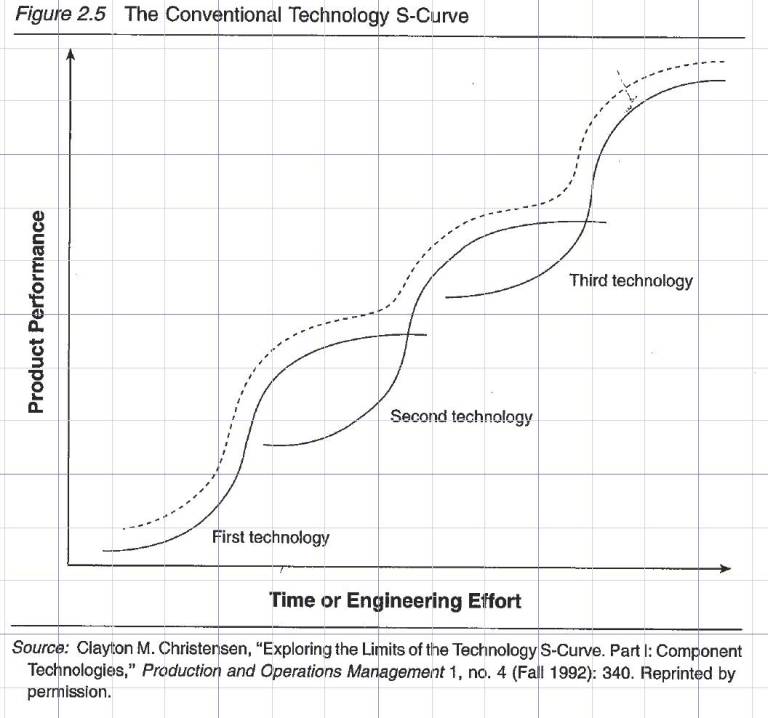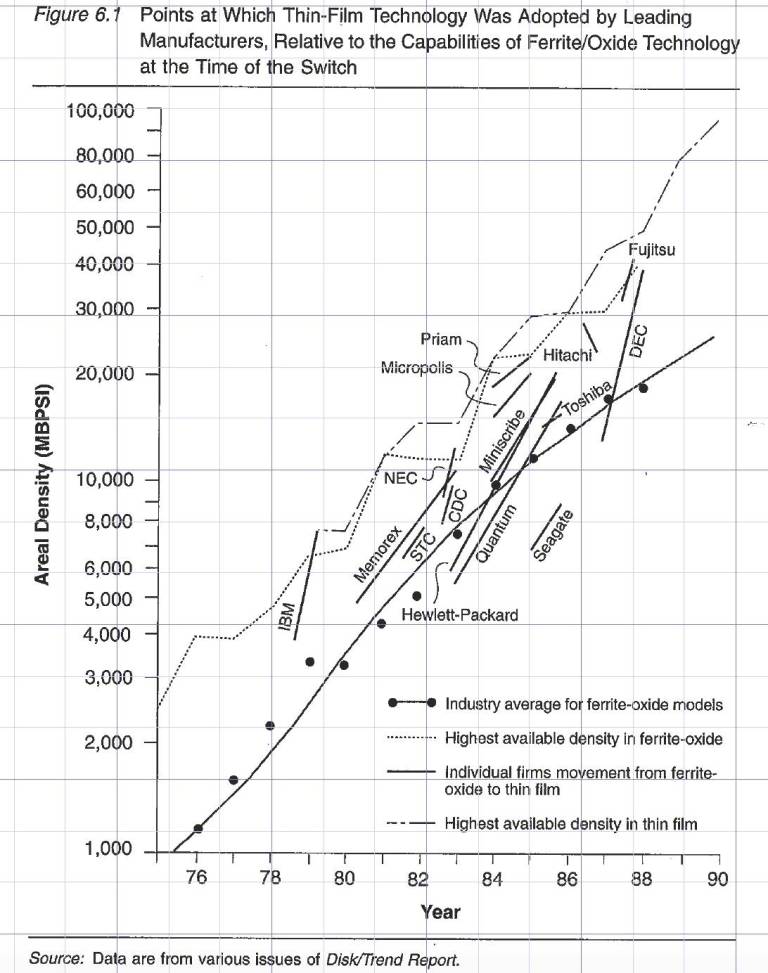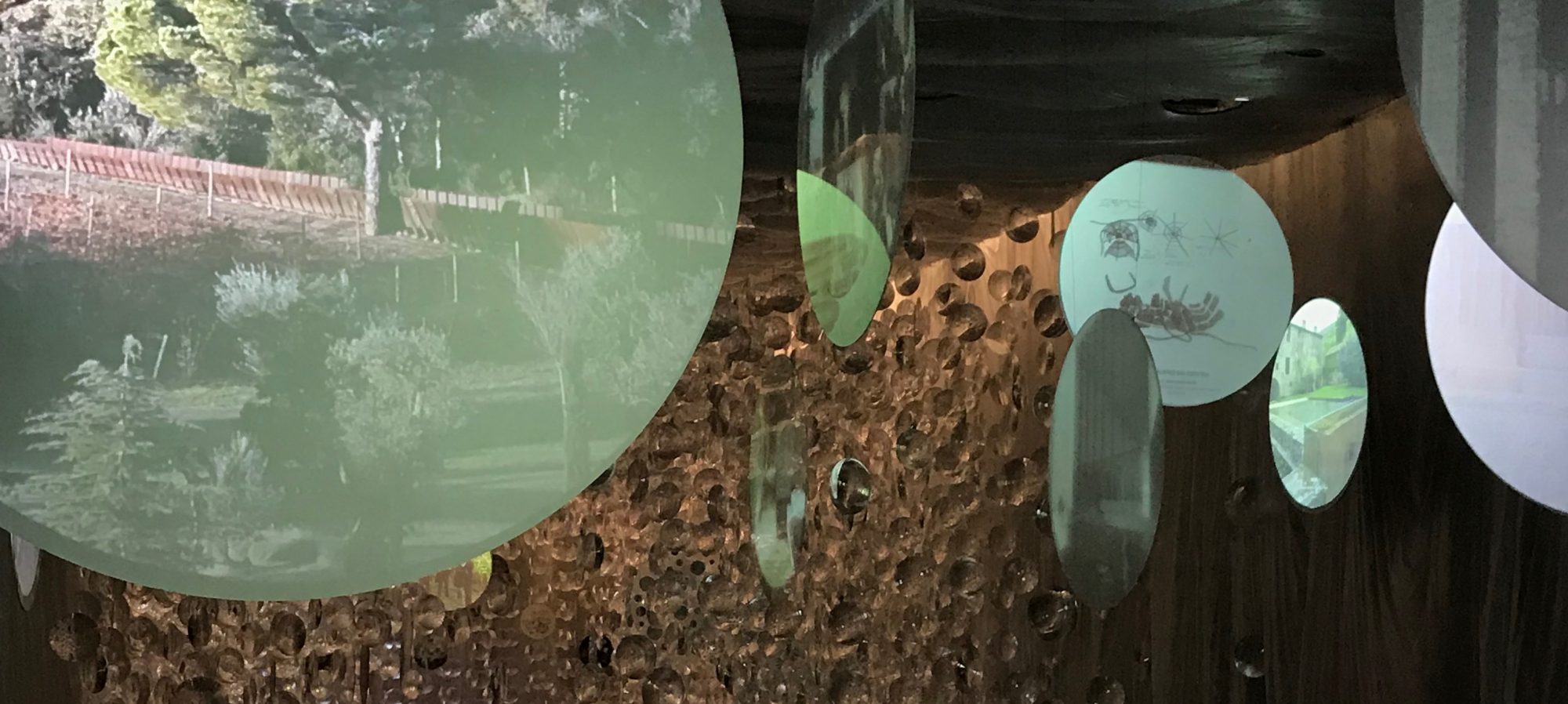Disruptive Innovation has become a bit of a fashionable phrase to bandy about in polite conversation. As an idea it has its intellectual sources in the work of Schumpeter and of course the more recent work of Clayton Christensen whose classic book the Innovators Dilemma is a must read for all architects and even academics no matter what discipline they are from. Of course, Schumpeter’s notion of creative destruction and Christensen’s work point to the economic horrors of late capitalism and the need for constant unsustainable growth. Be that as it may, understanding innovation theories, models and frameworks, is essential if architects are to understand how technology can be managed both within and outside of the firm.
The Innovator’s Dilemma
As Christensen argues in the Innovators Dilemma firm’s are often adept at responding to evolutionary changes in their markets but they may not be capable at either initiating or managing market changes that are the result of what Christensen calls “disruptive innovation.” Christensen defines “sustaining technologies” as innovations that make a product or service perform better in ways that customers in the market already value. In contrast “disruptive technologies create an entirely new market through the introduction of a new kind of product or service.” Christensen suggests that initially, at least, that these types of innovations may actually appear to be less effective in performance terms as judged by mainstream and traditional clients. As Christensen states “Disruptive innovations create an entirely new market through the introduction of a new kind of product or service”.
The S-Curve
Christensen’s original research was based on the technological history of the disk drive industry . This has given us a useful framework for considering how technologies evolve and this evolution is not necessarily predictable and this is why I am a technology skeptic (remember when VR studios were going to replace the face to face design studio).
The S-Curve model of technological evolution maps product performance against time or engineering effort to effect this performance. In this model technologies follow a S-Curve pattern of improvement but there are often alternatives and other technologies that can be switched to as a technology matures and it becomes more difficult for it to achieve particular gains. This is true of most technologies but if we regard particular bundle of business processes or workflows as a technology then then the S-Curve model can be viewed in broader light. In other words the S-Curve model may be applied to either technological components or a new technological architecture or platform or a nexus of organisational processes and technologies. I think that even cities can be regarded as and conceptualised as global technology.

The next big thing and things
Arguably BIM allied digital fabrication is a disruptive technology that provides the possibility that new markets and services within the construction and property industry will emerge. These new markets might include a market for 3 dimensional modelling services directly connected to digital fabrication and industrialised construction methods. The parametric design and lean construction movements have forecast and predicted that disruptive technologies will change design and construction markets. Artificial Intelligence and robotics are also emerging technologies that some pundits also see as being disruptive in the foreseeable future. Certainly the emergence of coding as a competency in architectural practices is something that is now becoming increasingly necessary. This is evident for example when one looks at the business model of Design to Production who intercede, using coding expertise, between architectural and fabrication and installation. One future scenario is that as a result of these changes design decisions and design knowledge creation will be made directly within at the level of new digitised supply and construction chains.
The rise of new mobile applications may also have implications for how architects work on site and relate to clients. The implication of these forecast is that this will lead to architects, who have traditionally been upstream controlling and overlooking supply chains, no longer being needed at all. To what extent all of these technologies are disruptive and to what extent they might change the market, or the way architects practice is debatable.
As Christensen’s mapping of memory technology in the disk drive industry indicates industry innovation and competition is less predictable and more chaotic than one might suppose. The next big thing or disruption may not be the next big thing. Emerging technologies or innovations may overlap or intersect and not neccesarily follow each other in lockstep.

It may sound strange but when I look at the above diagram and the phenomena it represents I think: This is reason why it is more important to teach architecture students how to think about technology strategically rather than to teach them the technology itself. Very few architecture schools teach anything about the strategic management of IT. We can fill our architecture schools full of subjects that teach digital skills. All over the globe there is always someone on an accreditation or visiting panel who says the architecture school isn’t teaching the right things for employability or CAD monkey utility. But if that is the case, and thats all architects do, we might as well all go home and forget about architecture as a social, cultural and political practice.
Architects and weird robots
Some technologies and innovations will create new markets and it is in the nature of capitalism that old markets destroy old ones. Given this there are two schools of thought about the impact on architecture. Will architecture as a discipline survive and adapt to the continuing onslaught of new technologies or will it disappear as a domain of knowledge and a practice and be replaced by weird AI robots? Architects are already pretty weird. Certainly, for architects in Australia the emergence of the project managers in the 1980s with a different and associated set of skills and technologies could be regarded as a disruptive innovation. IN Project managers were able to “create an entirely new market through the introduction of a new kind of product or service.” I personally think that apps will help to create new markets for architectural services and change the way architects do their business.
Architects, both in firms and as a profession, need to scan the horizon in order to anticipate the emergence and impact of disruptive technologies within the design, property and construction industry. But overscanning the firm’s event horizon as new technologies emerge can also be a danger. Skepticism is required. Not all new technologies or innovations will be the next big thing. Architects need to distinguish between disruptive as well as sustaining, or incremental innovations or technologies. Not all new technologies or innovations are going to be disruptive and not all incremental technologies and innovations are going to be effective. It could be year’s before the latest app, fabrication or manufacturing process or new super nanomaterial changes the market for architectural services. Similarly, the next big thing may only be the next incremental innovation rather than what its proponents and marketers claim it to be.
Given the artisanal and seemingly primitive nature of most construction processes it is all too easy to latch onto the next big technological thing and see it as being disruptive. The contrast between new technologies and the chaos of manual labour and the scatalogical nature of building sites is an easy one to be seduced by. Architects managing firms need to assess emerging technologies and decide if they either pose a potential threat to a firm’s competitive advantage or business model or if they should be part of the firms strategic infrastructure. This assessment is important if architectural firms are to decide if a new technology is simply evolutionary, in other words an incremental improvement, or in fact is disruptive. Such an assessment will also determine the kinds of alliances a firm might take up or pursue in order to remain competitive. Architects also need to understand how emerging and disruptive technologies are changing the markets and landscape in which there clients exist in.
Architects need to debate how emerging technologies will effect their traditional markets of creating and selling design knowledge. These debates need to go beyond simplistic arguments about the employability of recent graduates and what they need to learn. How might market and industry structures change and what kind of technologies will the architectural firm of the future contain? I don’t really know the answer to these questions but I do know that Architects, architectural researchers and architectural educators need to be skeptical about the next big thing.

